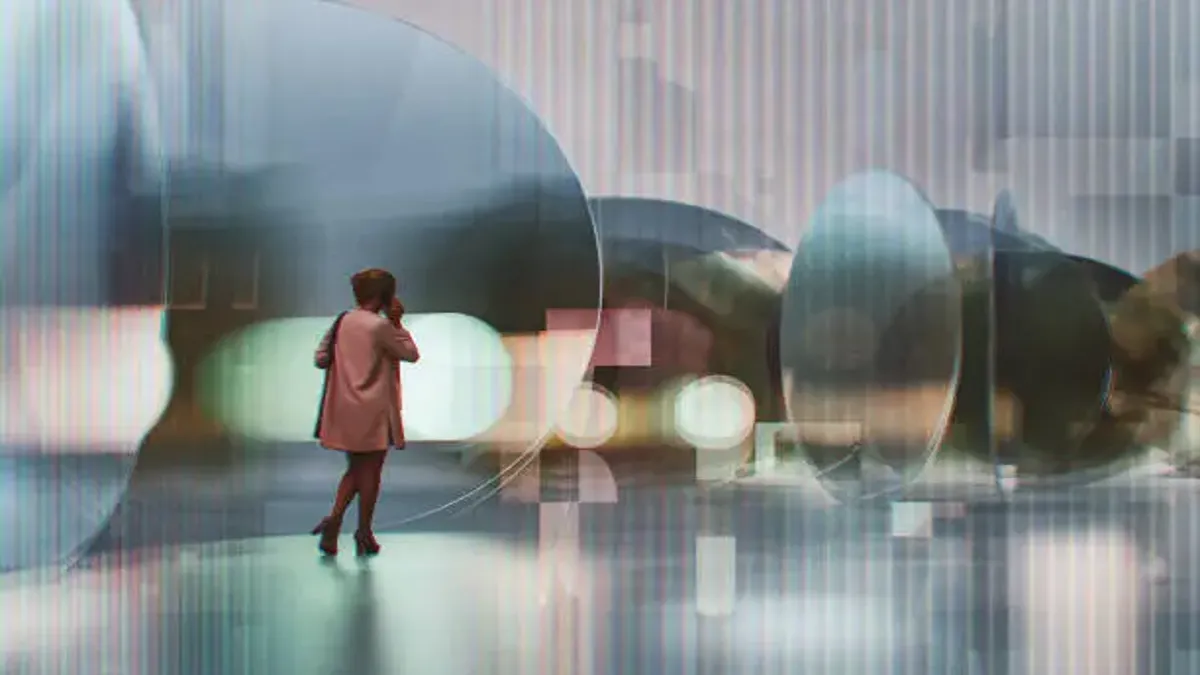In the expanding vocabulary of internet identity and gendered isolation, “femcel” has emerged as a term both misunderstood and revealing. Short for “female involuntary celibate,” the label mirrors the more familiar “incel” but carries distinct psychological, social, and cultural dimensions. While incel discourse often captures mainstream attention through controversy and aggression, the femcel conversation unfolds quietly, introspectively, and often painfully, across digital corners where women discuss loneliness, rejection, and self-perception. Within the first few moments of entering a femcel forum, it becomes clear that the movement is not simply about dating struggles—it’s about belonging, validation, and how gender expectations shape emotional solitude. As researchers and sociologists increasingly turn their attention toward this subculture, they find a phenomenon shaped by feminism, online identity, and the unspoken pressures of modern intimacy.
Origins and the Digital Genesis of Femcel Identity
The term “femcel” gained traction in the late 2010s, though its conceptual roots date back to early internet forums where women shared experiences of romantic or sexual exclusion. Initially a derivative of “incel”—a term coined in the 1990s by a Canadian woman named Alana to describe involuntary celibacy without gender boundaries—“femcel” evolved into its own linguistic and emotional space. Unlike the male-dominated incel communities that often spiraled into hostility, femcel spaces emphasized emotional introspection, body image, and social alienation. As digital sociologist Dr. Rebecca Grayson explains, “Femcel identity is a reflection of the same loneliness expressed in incel culture, but internalized rather than externalized—it’s a sadness turned inward.” The migration of this discourse to Reddit, Tumblr, and Discord transformed it into a collective language of shared despair and occasional dark humor, mirroring how digital spaces redefine solidarity through irony.
The Anatomy of a Subculture: Who Are Femcels?
Femcels are typically women who perceive themselves as chronically rejected or undesirable despite desiring intimacy or companionship. Their ages range from late teens to mid-thirties, though the phenomenon spans older demographics as well. They frequently describe social isolation, anxiety, or experiences of exclusion within dating ecosystems dominated by visual metrics—swipes, likes, and filters. While incels often attribute rejection to perceived female superficiality or hypergamy, femcels frame rejection as personal inadequacy within patriarchal beauty hierarchies. “We don’t hate men,” one anonymous user wrote on a femcel Reddit thread. “We just feel invisible to them.” This invisibility lies at the intersection of self-perception and societal ideals—a space where identity and desirability collide.
| Dimension | Description | Common Expression in Femcel Communities |
|---|---|---|
| Self-Perception | Feelings of physical or emotional inadequacy | “I’m too plain for anyone to notice.” |
| Social Experience | Chronic rejection or invisibility | “No one’s ever asked me out.” |
| Psychological Impact | Loneliness, depression, low self-worth | “I feel like I was born to be alone.” |
| Coping Mechanisms | Humor, fatalism, peer support | “At least we’re honest about it.” |
| Online Culture | Use of memes and ironic slang | “Pretty privilege simulator: reality.exe not found.” |
The Role of Beauty and Body Image
Central to femcel discourse is the obsession with beauty standards and the hierarchies of attraction. Participants often discuss concepts like “lookism”—the discrimination based on physical appearance—and “Chad” or “Stacy” archetypes borrowed from incel terminology. However, in femcel spaces, these labels take on a different meaning: not targets of resentment but symbols of unattainable normalcy. Social media exacerbates these insecurities through relentless visual comparison. “Every app reminds you that beauty is currency, and some of us can’t afford it,” said a forum user in a 2023 study on digital loneliness. Femcel narratives reveal how patriarchal beauty ideals harm both genders, creating winners and losers in a marketplace of affection shaped by algorithms rather than authenticity.
Psychological Underpinnings: From Rejection to Identity
Psychologists studying the phenomenon note that femcel identity often emerges as a coping mechanism—a way of recontextualizing chronic rejection into collective meaning. Self-identifying as a femcel allows individuals to externalize their pain while forming community. It becomes less about seeking solutions and more about finding recognition. Clinical therapist Dr. Naomi Ellis notes, “In femcel spaces, shared suffering becomes a language of survival. The identity transforms pain into solidarity.” Yet this solidarity can sometimes reinforce fatalism. Many discussions focus not on overcoming loneliness but on accepting it as permanent. This shared nihilism mirrors online subcultures where self-deprecating humor masks deeper mental health struggles.
Feminism, Gender Politics, and the Femcel Paradox
The femcel conversation complicates mainstream feminist narratives about empowerment and choice. On one hand, it exposes how gendered expectations persist—even in an era of supposed equality. On the other, some critics argue that femcel ideology risks reinforcing patriarchal validation by measuring self-worth through male attention. Feminist scholar Laila Ahmed suggests that “femceldom represents both rebellion and resignation: rebellion against the glamorization of romance, yet resignation to loneliness as destiny.” The paradox lies in the dual awareness—recognizing oppressive structures yet feeling powerless to transcend them. Femcels occupy a gray zone between critique and compliance, embodying what social theorist Lauren Berlant called “cruel optimism”: the persistence of hope in systems that deny fulfillment.
The Internet as Confessional Space
Digital platforms serve as modern confessionals for emotional alienation. Femcel forums, often private or semi-anonymous, act as safe zones where vulnerability coexists with dark humor. These spaces allow women to articulate frustrations rarely acknowledged in mainstream discourse. Posts oscillate between diary-like entries and meme exchanges, forming an ecosystem of empathy and irony. A typical conversation might begin with despair—“I’ll never be loved”—and end with collective humor—“At least my cat won’t ghost me.” Anthropologist Jessica Chan describes this duality as “therapeutic absurdism”—using humor to survive despair. Such dynamics highlight how online anonymity can both heal and entrap: it validates emotions while perpetuating isolation.
Comparative View: Femcels vs. Incels
While both groups share the theme of involuntary celibacy, their underlying motivations and emotional expressions differ markedly. Incels tend toward externalized anger, often directed at women or society. Femcels internalize their pain, expressing self-criticism and social withdrawal. This distinction stems from gender socialization: men are conditioned to externalize frustration, while women are taught to internalize inadequacy. As sociologist Dean Wallace explains, “Where incels rage, femcels grieve.” Yet both groups reflect a broader cultural malaise—digital alienation in an era that prizes connection yet delivers comparison.
| Aspect | Femcels | Incels |
|---|---|---|
| Emotional Direction | Inward (self-blame) | Outward (societal blame) |
| Dominant Tone | Melancholic, ironic | Angry, hostile |
| Gender Role Reflection | Beauty pressure, invisibility | Entitlement, rejection |
| Community Goal | Validation, discussion | Protest, grievance |
| Media Perception | Overlooked or misunderstood | Often sensationalized |
Cultural Representations and Media Narratives
Media coverage of femcels remains sparse compared to incel discussions. When addressed, it often frames femcels as a curiosity rather than a serious sociological phenomenon. Pop culture occasionally brushes the theme—films and TV explore female loneliness but rarely link it to structural alienation. Yet femcel voices increasingly surface through essays, podcasts, and TikTok videos where women candidly share stories of rejection and aging. In one viral post, a 29-year-old creator said, “Femcel isn’t a phase—it’s a reflection of a society where empathy is algorithmic.” Such self-narratives reveal a generational shift: loneliness is no longer hidden shame but a subject of open conversation, albeit often laced with irony.
Social Media and the Algorithmic Trap
Social platforms, while offering community, also perpetuate the loneliness cycle. The same algorithms that connect femcels also reinforce aesthetic hierarchies through engagement metrics favoring beauty and status. The digital visibility paradox—where one is seen but not desired—intensifies alienation. “We exist online but remain invisible in life,” lamented a user during a 2024 online ethnographic study. Instagram and TikTok, saturated with curated perfection, create feedback loops of envy and inadequacy. The algorithm thus becomes both therapist and tormentor, shaping not only what femcels see but how they see themselves.
Academic and Clinical Perspectives
Academia’s interest in femcel culture has grown in recent years. Psychologists view it through lenses of attachment theory, social comparison, and digital identity formation. Many femcels exhibit patterns of anxious-avoidant attachment, oscillating between yearning for closeness and fearing rejection. Clinicians emphasize early intervention, as prolonged isolation can heighten depressive symptoms. At the same time, scholars caution against pathologizing the identity. “Loneliness is not a diagnosis—it’s a condition of modernity,” writes researcher Hannah Cole. By studying femcel spaces, experts hope to better understand gendered loneliness in the digital era—a phenomenon as much cultural as clinical.
The Language of Femceldom: Irony and Community
Femcel communities have developed distinct linguistic codes—a blend of slang, acronyms, and memes that foster belonging. Phrases like “foid” (female humanoid), “lookmaxxing” (improving appearance), and “copeposting” (venting without hope) populate discussions. Irony serves as emotional armor, allowing participants to express despair without appearing weak. Humor thus becomes a survival strategy. As one user quipped, “If you can’t be loved, at least be funny.” Linguists note that this “bleak humor dialect” reflects resilience as much as resignation. Language binds the community even as it documents collective suffering, turning loneliness into a shared vocabulary of endurance.
Broader Societal Implications
Femceldom illuminates wider societal failures—how neoliberal individualism and digital romantic economies foster disconnection. The ideology of self-optimization promises fulfillment through productivity and aesthetics but leaves little room for vulnerability. Femcels expose the lie of meritocracy in love: that effort guarantees affection. Their existence challenges a culture obsessed with visibility yet allergic to intimacy. “The femcel isn’t the problem,” sociologist Marta Ruiz observes. “She’s the symptom of a society that confuses connection with consumption.” In this light, the femcel movement becomes less about isolation and more about resistance—an unintended critique of capitalist emotional economies.
Coping Mechanisms and Paths Toward Healing
Despite the somber tone of many discussions, femcels are not devoid of resilience. Some members channel their energy into art, writing, or advocacy for mental health awareness. Online therapy groups, journaling collectives, and even humor-based “cope chats” help participants navigate their emotions. Common therapeutic recommendations include cognitive-behavioral therapy, self-esteem workshops, and gradual re-engagement with social life. Healing begins not by denying pain but by reframing it. “It’s okay to be alone,” one forum moderator wrote. “It’s not okay to believe you deserve nothing.” This distinction—between solitude and self-loathing—marks the first step toward empowerment.
Key Observations and Takeaways
- Femcel identity originates from digital forums emphasizing emotional solidarity over aggression.
- Core issues involve beauty hierarchy, social comparison, and internalized inadequacy.
- Femcels differ from incels in emotional direction, tone, and community ethos.
- Technology amplifies loneliness through aesthetic algorithms and validation loops.
- Healing depends on reframing self-worth beyond societal and digital desirability.
Future of Femcel Discourse: From Shame to Study
As the conversation evolves, researchers and creators advocate reframing femceldom as a psychological and cultural inquiry rather than a stigma. The rise of documentaries, academic panels, and online dialogues signals a growing willingness to address female loneliness without ridicule. Younger generations approach the topic with nuanced empathy, recognizing that rejection and solitude are universal experiences magnified by digital culture. The next chapter of femcel discourse may focus not on identity but on systems—how media, technology, and capitalism engineer emotional inequality. The goal, as Dr. Grayson concludes, “isn’t to cure femceldom, but to understand what society made it possible.”
Conclusion: Loneliness as Mirror, Not Malady
In the quiet corners of the internet, femcel communities write their own form of collective literature—raw, self-aware, and darkly humorous. Their voices echo a truth modern culture often avoids: that loneliness is not failure but reflection. Through their posts and stories, femcels force a reconsideration of empathy, beauty, and digital belonging. They are not the opposite of empowerment—they are its unspoken underside. By studying their world, we glimpse our own: a civilization hyperconnected yet emotionally starved. In their solitude lies a collective confession of the 21st century—that intimacy, like identity, has become something we must first unlearn before we can truly experience.
FAQs
1. What does “femcel” mean?
“Femcel” refers to a woman who identifies as involuntarily celibate—unable to find romantic or sexual relationships despite wanting them. The term highlights the emotional and social complexities of female loneliness.
2. How do femcels differ from incels?
While both experience involuntary celibacy, femcels tend to internalize rejection and discuss self-worth issues, whereas incels often externalize frustration. Femcel spaces are generally introspective, empathetic, and less antagonistic.
3. Are femcels anti-men?
No. Most femcel communities focus on self-reflection and emotional support rather than resentment toward men. Discussions often center on beauty standards, self-esteem, and societal pressures.
4. Can femcel identity be overcome?
Yes, through therapy, social reconnection, and reframing self-perception. Many former femcels find healing by focusing on self-acceptance and building meaningful non-romantic connections.
5. Why is the femcel phenomenon important to study?
It sheds light on gendered loneliness, digital culture, and the psychological effects of beauty hierarchies. Understanding femceldom helps society confront broader issues of isolation and identity in the modern age.







